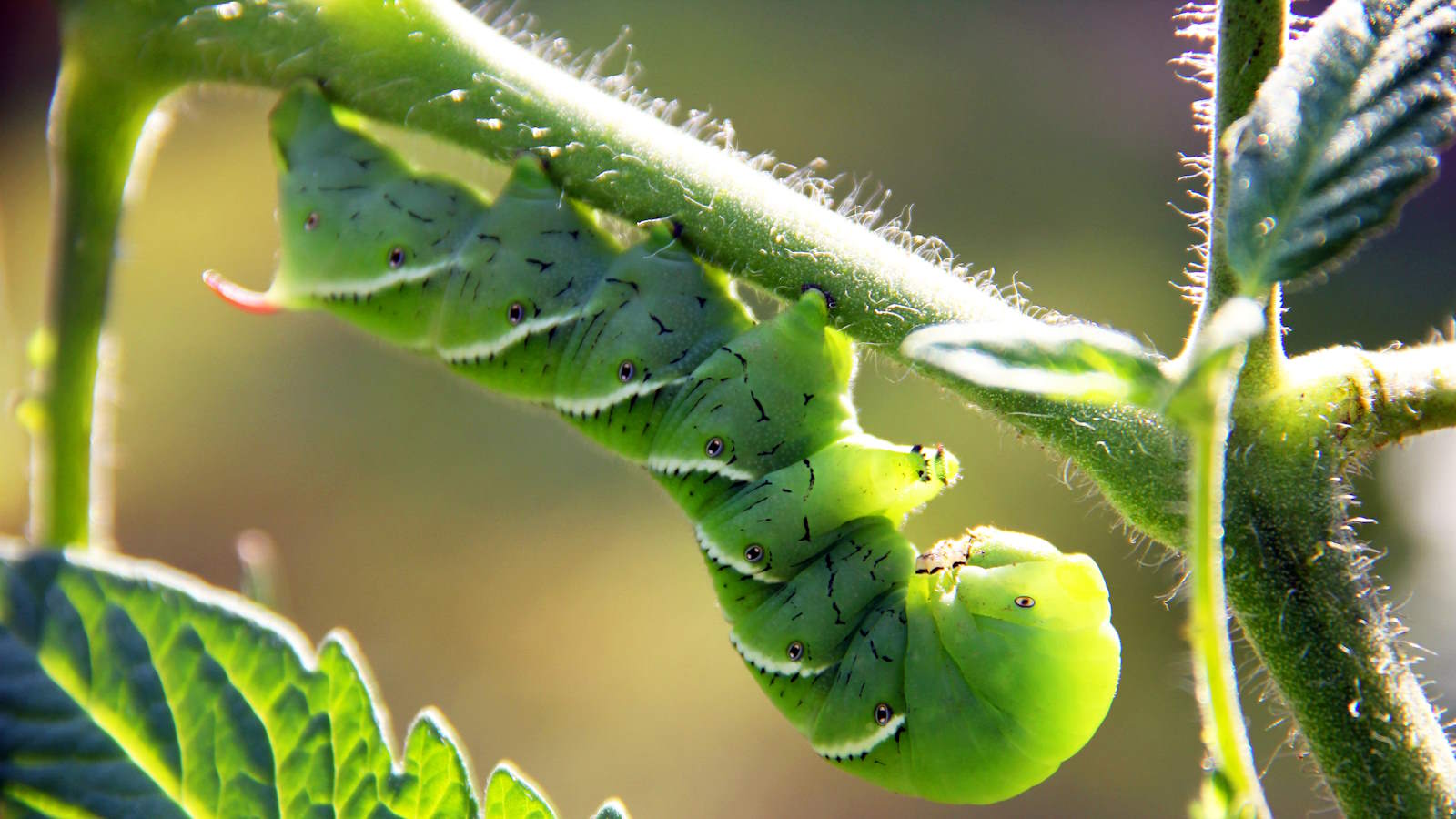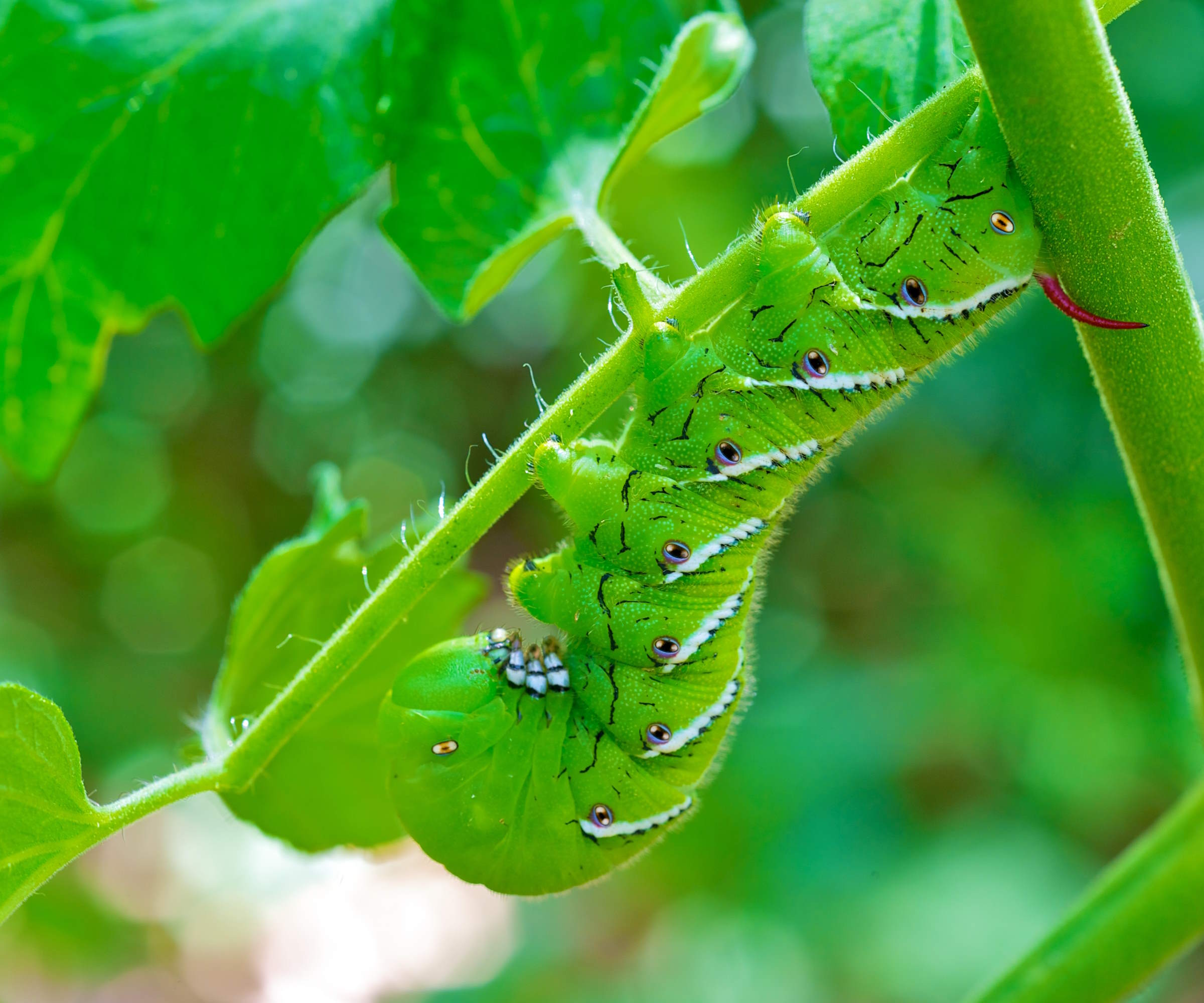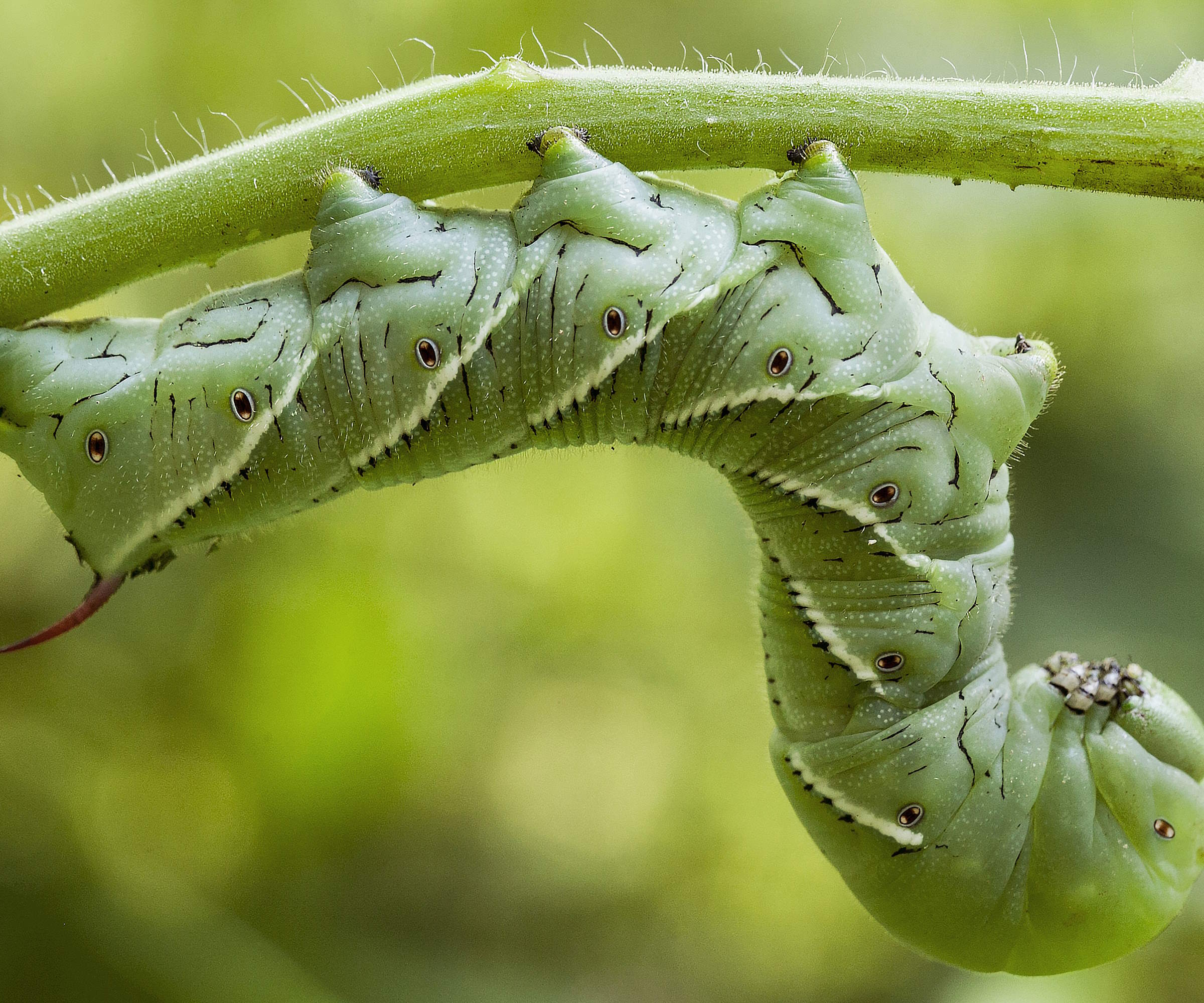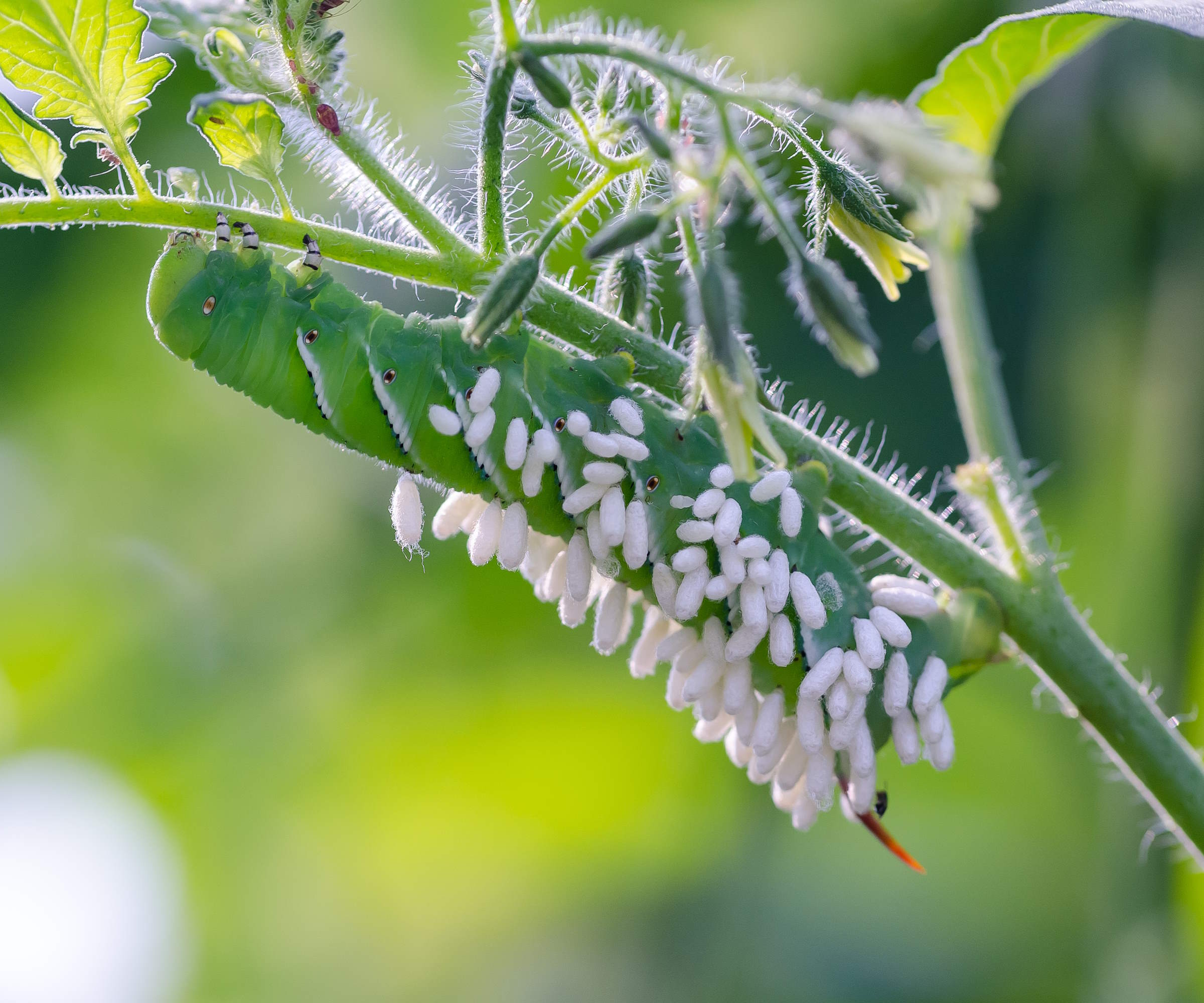
Tomato hornworms are hugely destructive pests that can decimate tomato plants with their voracious appetite. The caterpillars are large and distinctive and eat consistently - capable of completely defoliating plants.
Such a devastating pest is the nightmare of anyone growing tomatoes. Despite their size, they can be easily camouflaged and you may only be aware of their presence once you start seeing the signs of damage.
Those signs can include munched leaves and fruit. However, there are ways to prevent or combat tomato hornworms if you spot them so you can get a harvest of delicious tomatoes.

Do tomato hornworms just attack tomato plants?
No, tomato hornworms target other crops in the nightshade family too, including eggplants, peppers, potatoes and tomatillos. If you are growing nightshade plants, knowing what they look like and how to eliminate tomato hornworms is important.
What are tomato hornworms?

Tomato hornworms (Manduca quinquemaculata) are the larvae of the five-spotted hawk moth. They can measure 4-5 inches long and have pale green bodies that easily blend in with the foliage. Tomato hornworms have ‘v’ markings along the side of their body, black spots, and a distinctive black horn on the end of their body.
The life cycle of a tomato hornworm sees it emerge as an adult moth in the spring. These tomato pests, which have a 4-5 inch wingspan, and are grey-brown with yellow spots, lay huge numbers of oval, light-green eggs on the underside of leaves.
The eggs hatch into larvae that feed ferociously as they quickly develop into caterpillars. The caterpillars then burrow into the soil when they are mature to enter the pupae stage, emerging as moths and starting the cycle again. The fast life cycle of a tomato hornworm means there can be two generations per year.
The signs of tomato hornworm damage

Emily Jones, tomato expert and founder of Tomato Mentor, warns; ‘These large green caterpillars can devour tomato leaves and fruit, causing extensive damage. They are often camouflaged and can be difficult to spot.’
While the caterpillars themselves may be difficult to spot, the signs that they are on your tomato plants are much easier to identify. Susan Mulvihill, author of The Vegetable Garden Pest Handbook, highlights three key things to keep your eyes peeled for:
- You’ll notice fruits with large bites out of them.
- The leaves will have a lot of chewing damage, sometimes to the point of being completely defoliated.
- The hornworms blend in with their surroundings so look below the damage for dark frass (the droppings produced by the larvae).
Regularly checking plants for signs of infestation means you can act quickly if anything is spotted. When it comes to their camouflage, Susan recommends: ‘If you go out to your garden at night with a UV flashlight, it’s easier to spot the caterpillars.’
Look for signs of chewed leaves starting at the top of the plant - where tomato hornworms often begin feeding from - and signs of frass further down the plant. Inspecting underneath leaves can help you find sneaky hornworms or collections of eggs.
How to get rid of tomato hornworms

There are a few tools at your disposal to help fight against tomato hornworms. Emily Jones recommends: ‘For larger pests – such as hornworms, caterpillars and snails – a simple method to deal with them is handpicking and removing from the garden.’
Handpicking is an effective but time-consuming method and the size of tomato hornworms makes them easier to spot, despite their camouflage. Scour plants to pick off the tomato hornworms and place them in a container filled with soapy water.
There are products you can spray that can help to control the pest. Susan Mulvihill highlights one particular organic pesticide that can be successful. ‘Apply Bacillus thuringiensis (Bt) to the foliage,’ she says. ‘Bt has beneficial bacteria that can target the caterpillar stage of insects.’
Bt is most effective against caterpillars as the product needs to be consumed to be effective. As well as Bt, neem oil and insecticidal soap can be effective against young caterpillars.
Companion planting tomatoes can attract predatory insects like lacewings and ladybugs that will feed on the eggs and young caterpillars. You can attract ladybugs and lacewings to your yard by planting marigolds, geraniums, nasturtiums and herbs such as dill and fennel.
Tomato hornworms are targetted by parasitic wasps that lay their eggs in the caterpillar. The larvae will feed on the hornworm and parasitic wasps make an excellent form of natural pest control. As well as tomato hornworms, there are types of parasitic wasps that can get rid of aphids, whiteflies, and other common pests.
You can purchase parasitic wasps to release and attract them naturally to your yard with additional support from companion planting. Tomato hornworms affected by parasitic wasps will have small white eggs attached to their back.
As the adult moths emerge in spring after spending winter in the soil, tilling the soil at the start of the year before planting tomatoes, and at the end of the season, can eradicate pupae overwintering in the ground and stop them from emerging as moths to start the life cycle of a tomato hornworm.
A ready-to-use spray product that controls cabbage looper, hornworms, tent caterpillars and more. It causes no harm to birds, earthworms, or beneficial insects
Spray on vegetables, fruit trees, ornamentals, shrubs, flowers and gardens to combat a range of common garden pests. Approved for organic gardening
Companion plant around your crops with herbs to attract predatory insects to combat tomato hornworms and also repel other garden pests
FAQs
Can tomato hornworms bite?
Tomato hornworms do not bite, or sting with the little horn on their posterior, and the pests are harmless to humans.
As well as pests like tomato hornworms, and others, there are also diseases, such as blight, powdery mildew and blossom end rot, that may strike. Thankfully, ensuring good air circulation, correct watering, and properly fertilizing tomatoes can help avoid many of these troublesome tomato diseases. To find out more, see our dedicated article on identifying issues and preventing diseases from striking your tomato plants.







